Search Posts
Recent Posts
- Fun Stuff To Do When You Are Feeling Blah or Just Need Something New and Different? July 13, 2021
- Do you Have a Why?? July 1, 2021
- Black Health Rising!! June 28, 2021
- Namaste Right Here for Now November 29, 2020
- Mixed Leafy Green Vegetables November 28, 2020
Categories
Subscribe!
Thanks for subscribing! Please check your email for further instructions.
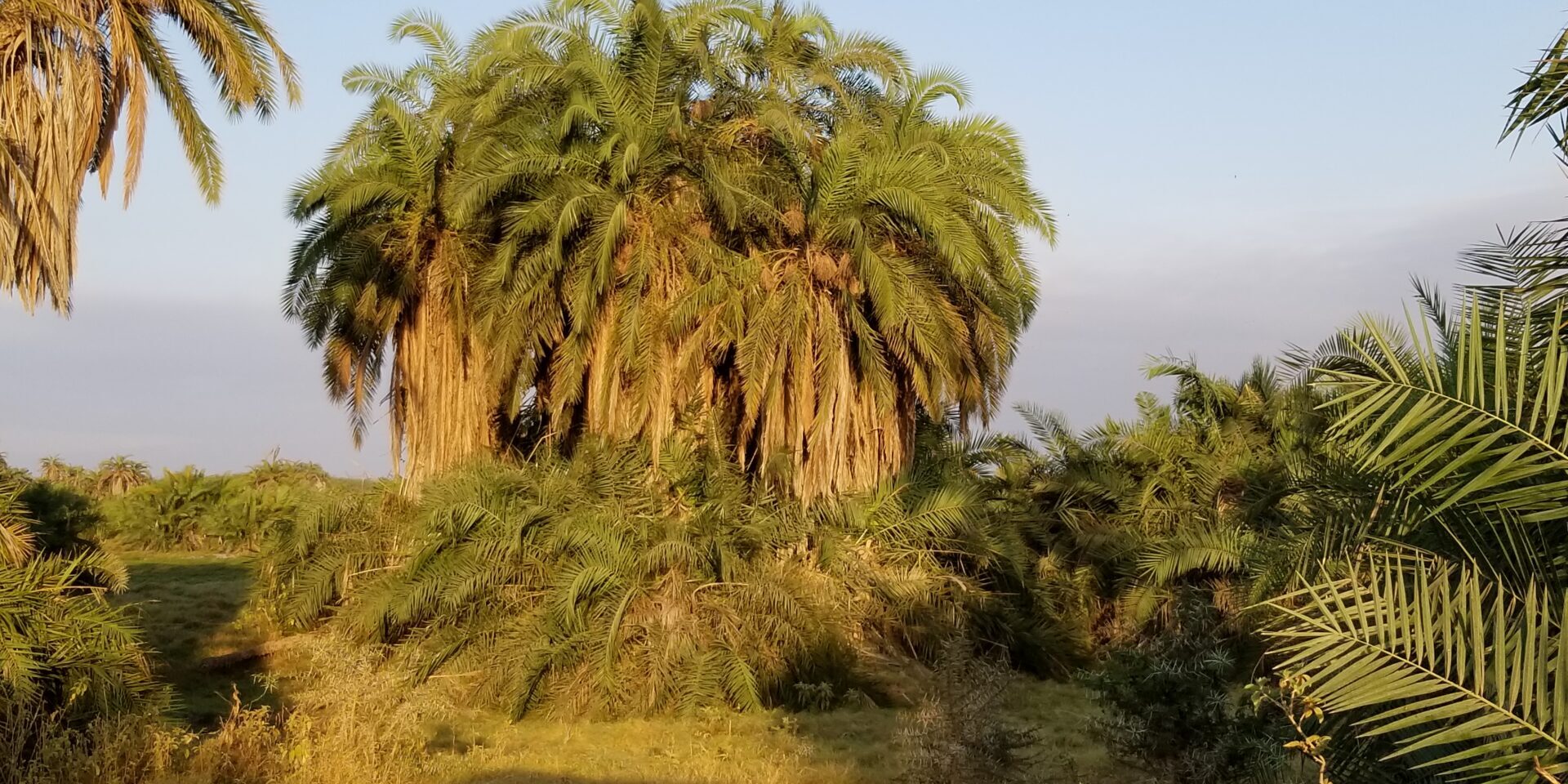

Days 4, 5 and 6 – More Amboseli
I met this gentleman when we arrived at Amboseli. I am sorry I didn’t write down his name. He is a young Massai warrior employed by the lodge. His job is to keep the baboon mischief under control. His weapon? Slingshot!

The baboons are known terrorists. We were told to keep our lodge room doors locked to keep them out. They push their way into the dining room, bar and guest quarters and take whatever they can. It might be fruit, chocolate, shoes…whatever catches their fancy, but mostly they go after food. See this ruffian on top of the back wall of the bar in the picture below? I caught him up there early in the morning, before the guy with the slingshot got to work. He’s looking for his first opportunity to grab something. Thug Monkey ran off once the warrior arrived and hit him with a well aimed rock.


Amboseli is a Massai word meaning “very dusty place.” The powdery-dry soil swirls up in dust devils that are visible for a mile or more. The dust devils look like small tornadoes, not very powerful, but visible against the bright blue sky. Sometimes, out on the range, we could see as many as 20 dust devils spinning in one area all at the same time. You can see a 3 or 4 of them pulling the dust up in columns here.
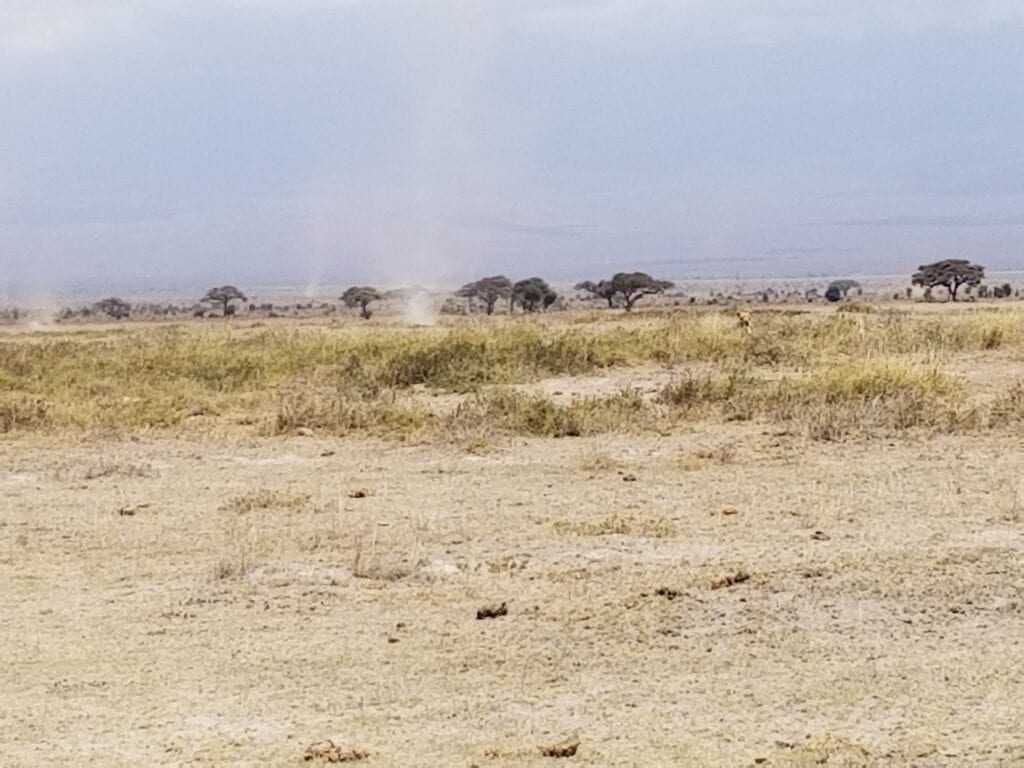
While the dust at Amboseli is formidable, the park also has several different ecosystems which make it home for a wide variety of animal and plant life. Lakes, plains, dusty former lake beds, palm tree thickets, highlands and wetlands….
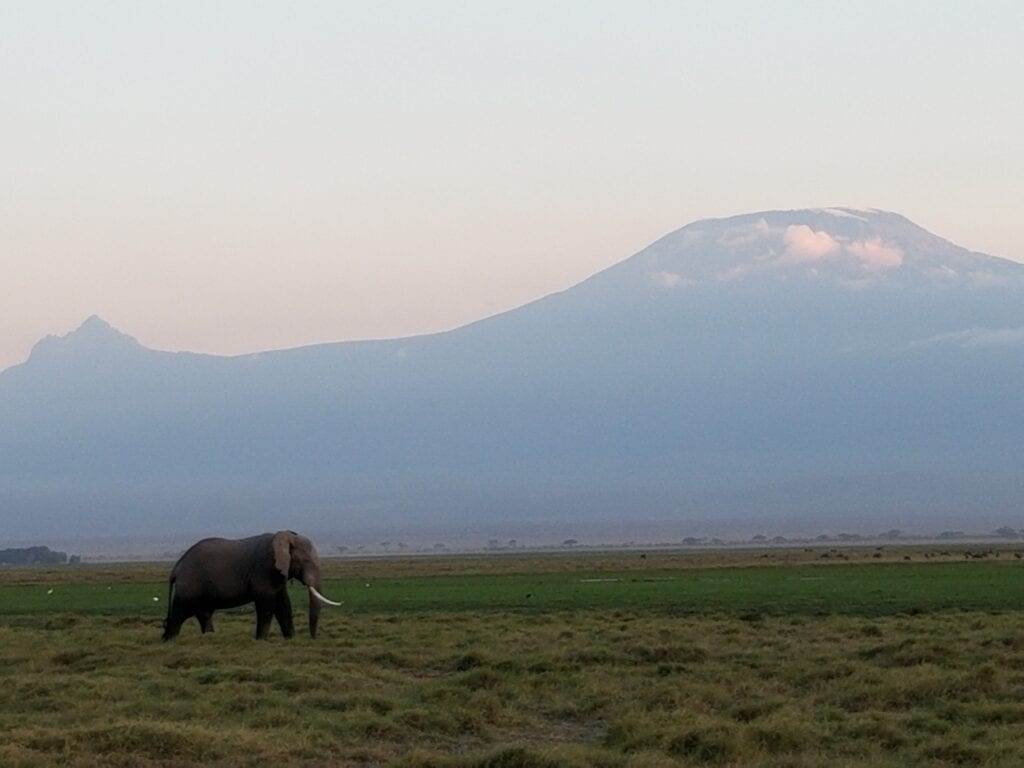
The high flat-topped mountain on the right is mount Kilimanjaro. Notice that it has almost no snow on it. Google any picture of Kilimanjaro and you will see that the snow is significant. Recent loss of snow on the mountain is seen as a sign of climate change. It sparks fear in the ecologically minded because the snow is a primary water source for the rivers, lakes, wetlands and the animals that depend on them for survival. The impact of the change in the snow melt run-off from Kilimanjaro over time is unknown. Right now it is increasing the levels of water in the lakes of Amboseli. The animals appear to love the easier access to water.










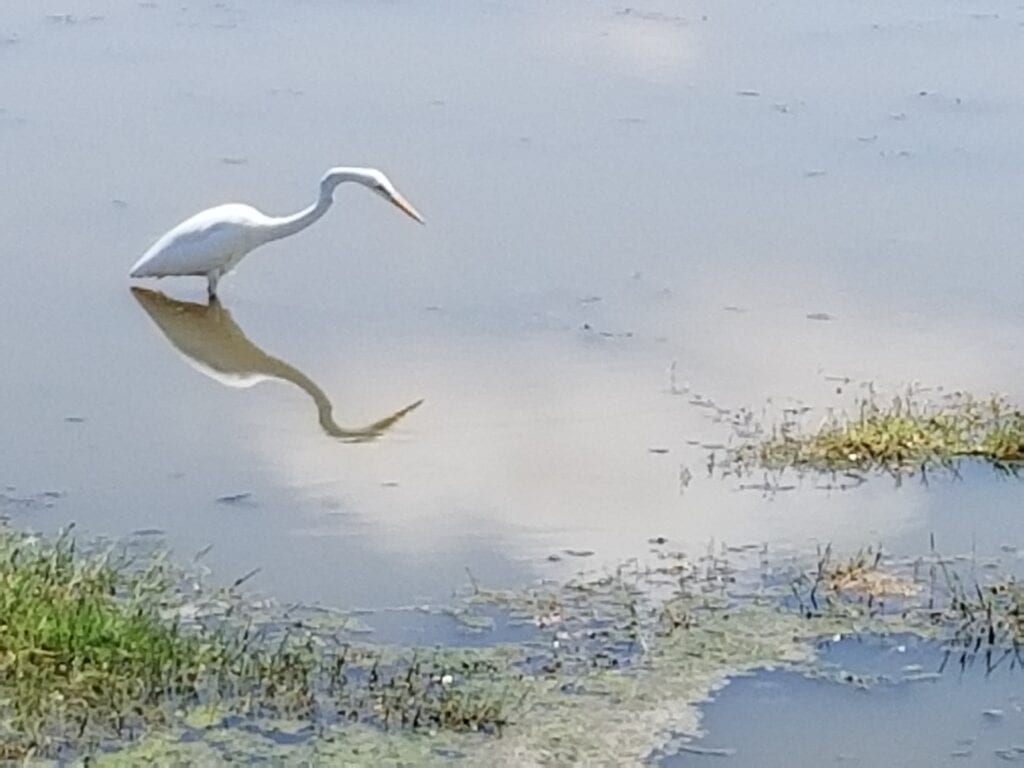


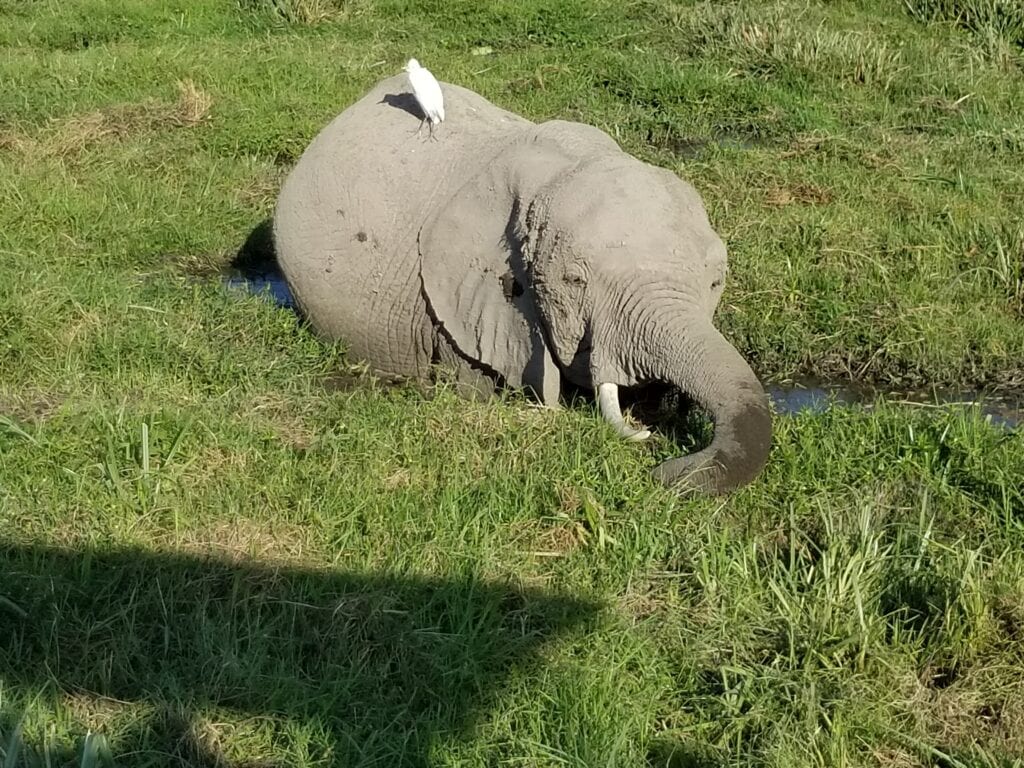


Safaris at Amboseli started at sunrise. We returned to the lodge for lunch, went out again and returned for dinner. These were long dusty days punctuated by great food. Just keep in mind that being a non-meat-no-animal-products-at-all traveler really requires having plant powered conversations daily. During this trip, speaking with the chefs was a pleasure.
I think it is important to remember that even though the western countries have had their way with most of the other countries in the world, those other countries still have their own traditions and dishes. The native dishes may not be as animal-centric as American dishes. I am grateful for that. Fresh fruits are readily available in the resorts and lodges. Well seasoned greens, curried vegetables and potatoes are common. In a lot of places, all we have to do is set arrogance and irritation aside and ask for the type of food that we eat.


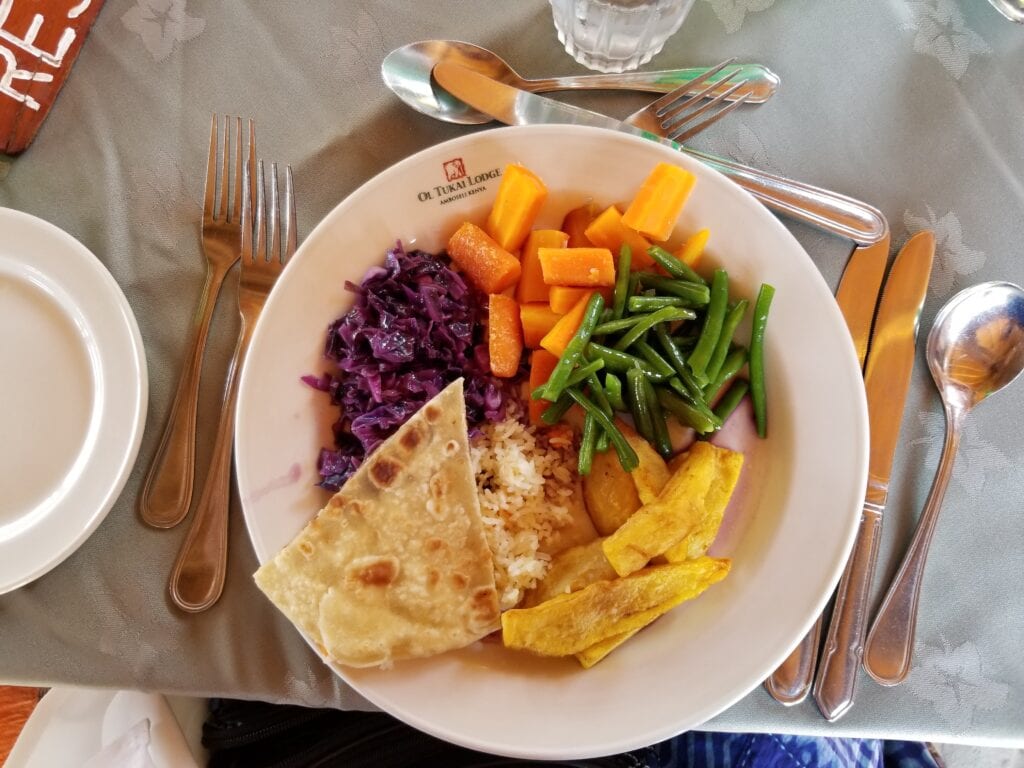
One thing I noticed in Kenya, and I even asked our tour guides about it: I didn’t see any brown rice anywhere, not in the large grocery stores and not in the dining rooms. I don’t know why.
I think I could have stayed in Amboseli for a looooong time. I have wanted to see, hear, smell Kilimanjaro, giraffes, elephant families, zebra and wildebeest most of my life. Well, I got a snap shot, an echo, a scent of them all! Done! Finally!

